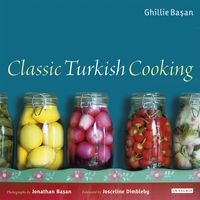Advertisement
Desserts
Published 1995

Turkey is a nation of sweet tooths. Milk puddings and pastries are eaten at any time of the day. Every town boasts a maker of milk puddings (a muhallebici). On opposite sides of the country, Istanbul is famous for its baklava, Artvin for its milk puddings. Business is brisk, as people pop in and out of the specialist shops to drool over large portions of their favourite desserts and wash them down with a sherbet drink, before going on their way again.
Early records of layered pastries can be found in Turkish culinary history. Sheets of yufka would have been baked dry with chopped nuts and sugar, a forerunner of the more sophisticated baklava. During the Ottoman period, a classic baklava created by the inventive Palace chefs consisted of fifteen layers, eight of them pastry dough and seven filling. During the reign of Mehmet the Conqueror, the Topkapı kitchens witnessed the industrious activity of specialist pastry makers, milk pudding makers, yogurt makers and helva makers. Amongst the special skills was the creation of the complex shredded kadayıf pastry, which is made by throwing the liquid batter through a sieve on to a sheet of metal suspended over a fire. As the dough sets it is scraped off the sheet and then stretched over cheese and baked, as künefe, or filled with nuts and moulded into syrupy desserts such as kız memesi kadayıf, ‘young girls’ breasts’.

